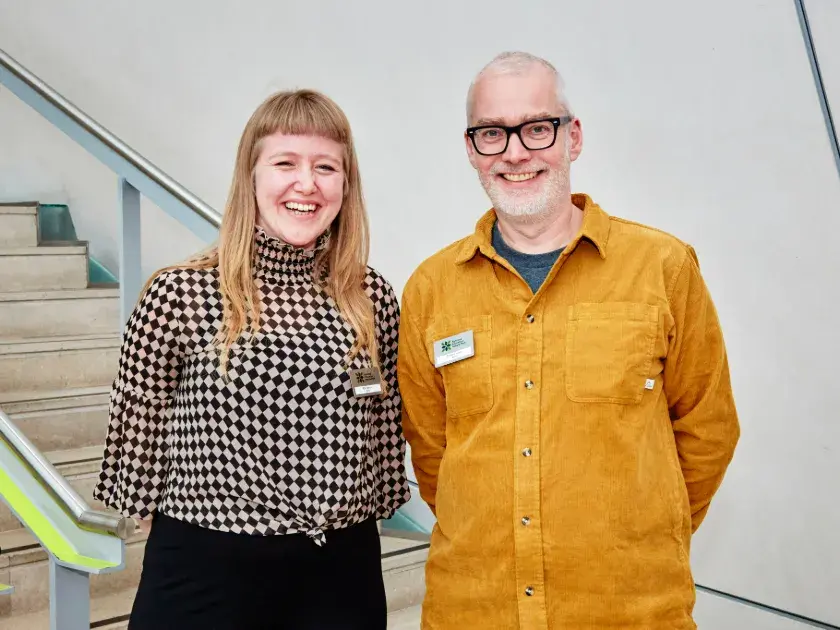Meet the Nature Park regional team: South West

© The Trustees of The Natural History Museum, London
Welcome to our series where we meet the regional teams working on the National Education Nature Park!
Our regional officers work in locations across England, helping spread the word about the Nature Park and supporting schools in their region on their Nature Park journey. In this blog we meet Richard Irvine and Ella Boston, the Senior Programme Officer and Programme Officer for the South West.
Richard Irvine, Senior Programme Officer for the South West
What excites you about the Nature Park programme?
"I love the scale and ambition of the Nature Park. The fact that it covers the whole of England and is backed up by a partnership of organisations with real expertise means that it can have a lasting impact on the education and wellbeing of the young people that it reaches. "
What are you looking forward to most with the Nature Park?
"It is great hearing from young people about what they value in their school grounds and the vision that they have for improving them. I am looking forward to visiting schools and seeing the impacts of the changes that they make for wildlife. I’m also excited to see the Nature Park map in the South West start to glow green as more schools and settings join the programme and get involved with community science projects in their grounds and neighbourhoods. "
What is your favourite UK wildlife and why?
"Even though they love eating young trees, I have a special affection for our largest native mammal, the Red Deer. I have had some great close encounters with individuals and herds in the woodlands of North Devon, the Scottish Highlands and even urban Plymouth. Being roared at by a rutting stag was a particularly memorable experience! Mostly they are very good at staying out of the way of humans but finding tracks in the mud and knowing that they are close by is a great reminder of the hidden wildlife that is often closer to us than we might think. "
What is the most interesting/unique/fun thing you’ve seen in school grounds?
"I used to work with a school that had a small area of Hazel coppice separating their Forest School area from the playground. It was a great example of sustainable management as the wood was harvested on a rotation by the children for craft materials that they could use in their learning. "
Ella Boston, Programme Officer for the South West
What excites you about the Nature Park programme?
"I love that this is a top-down initiative that shows young people that the government, the Department for Education, and respected organisations like the RHS and the Natural History Museum are all invested in environmental education. It proves that real change is happening and that the narrative around climate change is shifting from doom and gloom to action and empowerment. Climate literacy isn’t confined to a single subject—it needs to be embedded across the entire curriculum, and it’s inspiring to be part of a movement that recognises this. We now have Nature Park officers in each region and alongside us, there is a network of sister projects, all working locally to improve young people’s lives through nature connection, green skills, and carbon literacy. This gives me great hope and I feel exhilarated to be a cog that is helping the nation move in the right direction. "
What are you looking forward to most with the Nature Park?
"I can’t wait to hear how young people feel about the environment—especially before and after changes have been made at their schools. Seeing them become more empowered to care about nature and take that enthusiasm home to their families and communities is something I’m really excited about. Their ideas and observations are always unique and insightful, and I’m looking forward to learning from them as much as they learn from us. "
What is your favourite UK wildlife and why?
"I’m fascinated by mycelium and the way it coexists with trees, forming vast underground networks that allow trees to communicate and share nutrients. I believe we can learn a lot about ourselves from our fungal cousins. Mycelium is often called the "Wood Wide Web" because of how it connects entire ecosystems, helping forests thrive. Honey fungus (Armillaria species) is one of the largest living organisms on Earth! In the UK, honey fungus colonies can grow dozens of metres wide, often unseen underground, only revealing themselves when trees and plants mysteriously decline. Despite being a deadly parasite to trees, honey fungus plays a vital role in ecosystems, breaking down wood and recycling nutrients back into the soil. "
Meet the other Nature Park regional teams
Contact your regional team
To get in contact with your regional team please email us at [email protected]